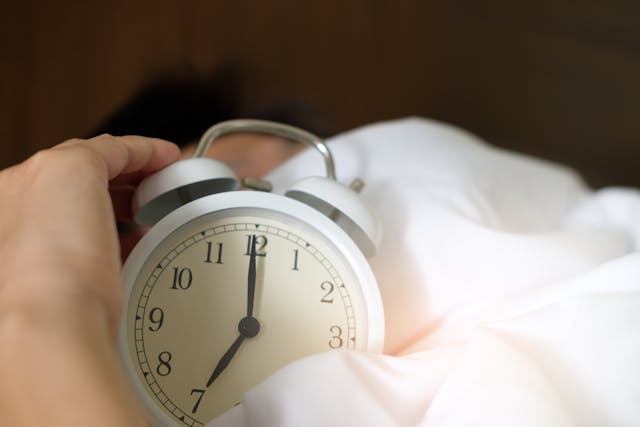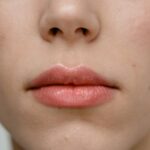Introduction: Why Sleeping Right Matters After Rhinoplasty
Rhinoplasty recovery involves more than resting and waiting—it also requires how you rest.
Your sleeping position directly affects swelling, bruising, and the long-term shape of your new nose. During the first few weeks, even a small amount of pressure can change healing outcomes. Knowing how to sleep safely after rhinoplasty ensures your recovery is smoother, faster, and complication-free.
1. Sleep on Your Back with Your Head Elevated
The best sleeping position after rhinoplasty is on your back (supine position) with your head elevated.
According to experts at The Rhinoplasty Center and Solomon Facial Plastic, elevation helps:
- Reduce swelling and bruising by improving fluid drainage.
- Prevent blood pooling around the nose and eyes.
- Protect the nasal structure from unwanted pressure.
Try to keep your head elevated at a 30–45° angle. You can do this by:
- Using a wedge pillow.
- Stacking two firm pillows under your upper back and shoulders.
- Sleeping in a recliner chair during the first few nights.
This position not only helps with comfort but also prevents accidental rolling onto your side.
2. Avoid Side or Stomach Sleeping
It’s tempting to return to your normal sleep habits—but during recovery, side or stomach sleeping can cause serious problems.
When you sleep on your side, your nose may press against the pillow, which can:
- Shift the nasal bones or cartilage while healing.
- Create uneven swelling or asymmetry.
- Delay recovery and affect final results.
Likewise, sleeping on your stomach places direct pressure on your nose, which can distort results or even cause discomfort and nosebleeds.
Stick to sleeping on your back for at least two weeks, and in some cases, your surgeon may advise continuing for up to a month.
3. How Long Should You Sleep Elevated?
The general rule is to sleep elevated for 1–2 weeks after surgery, while swelling is at its peak.
However, depending on your procedure (for example, revision rhinoplasty or major structural work), your surgeon might recommend continuing for 3–4 weeks.
Even once your splint or cast is removed—usually around day 7—your nose is still healing internally. Continued elevation ensures gentle drainage and prevents nighttime puffiness.
If you notice swelling return when you lie flat, that’s a sign you should maintain elevation for a few more nights.
4. Use Support Pillows to Stay in Position
Even if you start sleeping on your back, it’s common to roll during the night. To prevent this:
- Place rolled towels or small cushions along both sides of your body.
- Try body pillows that provide comfort while acting as gentle barriers.
- You can also hug a pillow to mimic the feeling of side sleeping without actually turning.
Some patients also find that weighted blankets help minimize tossing and turning.
5. Make Your Sleeping Environment Relaxing
Healing is faster when your body gets quality rest. Here are a few sleep-enhancing tips from rhinoplasty experts:
- Avoid caffeine or alcohol before bed—they can disturb your sleep cycle.
- Keep your room cool and dark to improve rest quality.
- Play soft music or white noise to fall asleep faster.
- Use silk pillowcases to minimize skin irritation and friction on your face.
6. Avoid Nose Contact While Sleeping
Even indirect contact with your nose during sleep can affect recovery. Here’s what to avoid:
- Don’t rest your hand or arm on your face.
- Avoid tight blankets or covers near your head.
- Keep pets away from your bed for the first few weeks to avoid accidental bumps.
- If you wear glasses, don’t sleep with them on—the frames can create pressure on the nasal bridge.
7. Transitioning Back to Normal Sleep
After about 2–3 weeks, once swelling has significantly reduced and your surgeon gives you approval, you can slowly return to your usual sleeping position.
When doing so:
- Gradually lower your head elevation (for example, remove one pillow each night).
- If you’re a side-sleeper, use a soft cushion under your cheek for extra protection.
- Keep an eye on swelling—if it worsens, resume back sleeping for a few more days.
Remember: even when you feel fine, your nose is still healing internally for several months. Always follow your surgeon’s advice before changing sleep habits.
8. Common Mistakes to Avoid During Sleep
- Sleeping flat or face-down within the first two weeks.
- Using too many pillows, which can strain your neck.
- Applying ice packs directly to your nose.
- Neglecting hydration or skipping prescribed medications.
- Ignoring your body’s need for rest—healing takes energy.
Conclusion: Rest Smart, Heal Better
Sleeping properly after rhinoplasty is one of the simplest yet most effective ways to ensure a smooth recovery.
By keeping your head elevated, protecting your nose from pressure, and maintaining good sleep hygiene, you help your body reduce swelling and preserve your surgical results.
In short, how you sleep directly affects how you heal. Combine these strategies with your surgeon’s personalized care instructions, and you’ll wake up each day one step closer to your final, refined result.

